
Cold Calling
The Antarctic Journey takes visitors places they’re never likely to go thanks to some immersive AV.
Text:/ Christopher Holder
Museums have changed considerably in recent years. Kids (especially) expect every exhibit to have some manner of interactive component. If you can’t press, shake, kick, turn, focus, smell or listen to the display then the caravan quickly moves on.
Which is where the tech plays its part — stunning images, interactivity, great sound — keeping school groups and daytrippers of all ages engaged.
Being such a specialised area, it’s hardly surprising to encounter specialist providers. The Antarctic Journey, as it’s called, was designed by Thylacine, while AV display specialists, Mental Media, led the production and technical charge as supplier of ‘turnkey multimedia’. The new project was co-sponsored by the World Wildlife Fund Australia and Phillip Island Nature Parks.
SOUTHERN COMFORTS
The new Antarctic Journey exhibit takes advantage of the once derelict basement level of the Nobbies visitor centre. Apparently there was previously a flume ride of some description but hadn’t been used in years. There was a lot of water damage… it was a mess.
The new exhibit activates the wasted space and gives visitors another reason to spend time in the area. It’s a world class attraction that has already reaped dividends.
The display is comprised of two main parts: this first is called The Lab, a hands-on interactive space with all manner of ways to explore and connect with Antarctic creatures. The second zone is a remarkable walk-through projection room called the Immersive Space — where beautifully shot video is projected across a host of dramatically-raked screens, accompanied by a specially-composed soundscape. This space is really quite breathtaking to visit.
Mental Media: (02) 9557 2011 or www.mentalmedia.com.au
Thylacine: www.thylacine.com.au

PLAYING WITH ORCAS
Bruce Brown: “People just love this exhibit. It’s an augmented reality package from a Belgian company. Originally it included penguins, seals and polar bears etc., and we engaged them to modify it, take out the polar bears — none of those south of the equator — and produce it to suit our needs.
“The system uses an HD camera that sits above the screen and integrates your image in with the animation. The difference here is the size of the screen, which is enormous. We use two stacked Panasonic 670s with long-throw lenses. The images are perfectly superimposed and we get the extra image intensity as a result. The cost to produce a one-off augmented reality setup like this would have been prohibitive so we’ve licensed it.”
IMMERSIVE SPACE
Like icebergs calving from the Wilkins ice shelf, eccentrically angled screens dot the Immersive Space allowing visitors to walk through and explore the footage at their own pace.
There are three sections: Southern Ocean (with four screens playing different HD content), Antarctic Section (another four screens playing different HD content) and a fun augmented reality activation with one large screen.
Taking care of the projections are Panasonic PT-RZ670 6500-lumen and PT-RZ470 3500-lumen laser light source projectors (depending on the size of the screen that needs filling), some fitted with ET-DLE030 ultra short throw lenses where required.
The content is being played out of Dataton Watchout systems, which take care of all the pixel mapping and image warping — of which there is plenty given the angles of the screens.
Mental Media Director, Bruce Brown: “The screens are raked by 10°, which posed some challenges in terms of geometry. We’re quite limited with space so the projectors are jammed hard up against the ceiling.”
Working with ultra short throw lenses is always a fiddly business but especially so when there’s no install wriggle room.
Bruce Brown: “The projectors have a little bit of lens shift to play with, but in the case of the ultra short throw lenses, there’s no zoom whatsoever. The way I prefer to work is to get my projectors positioned as best as I can before any other adjustments. So we spent a lot of time trying to get the projectors far enough from the screen and at the right 10° angle.
“The projector mounts are bolted to Unistrut, which allowed us to slide the projector back and forth to get it in the exact position in relation to the screen. Great. But the problem we had was not having the space between the projector and the ceiling to tighten all the bolts up! So we had to slide the projector off and on, gradually fine tuning the precise position through trial and error.
“From there we used Watchout, which takes care of all the geometric correction but it was important to get the projector installation correct first.”
The install might have been painstaking, but the ultra short throw lenses of the Panasonic laser projectors in the Southern Ocean zone help to ensure there’s no shadowing — as you walk through the space the screens loom large but you can literally walk up to the screens and almost touch them without fear of shadowing ruining the impact.
The Panasonic projectors won the day for a couple of reasons according to Bruce: “A co-sponsor of the project is the World Wildlife Fund Australia, so we were immediately thinking about laser projection as it’s more efficient and, because it runs cooler, is less taxing on the air conditioning. Panasonic was also one of the few options that allowed us to combine solid state projection with ultra short throw lenses at the time. I had no hesitation in specifying Panasonic, I’ve worked with their projectors for years and always had a positive experience.”
AUSTRALIAN BITE
There are a number of hidden gems in the immersive space. Proceeding into the Southern Ocean corridor trips an infrared sensor which triggers footage of a monstrous white pointer, teeth bared — shades of a Back to the Future II Marty McFly getting eaten by the hologram promo from Jaws 19! In this case, the shark footage is on a standby timeline in the Watchout system. A delay exists to ensure the shark isn’t constantly making an appearance during a busy period. But it’s a nice shock-value feature that keeps the kids on their toes.
Another one of my favourites is the Whalesong Light Organ. Visitors can trigger one of the five whalesong ‘notes’ by breaking floor-to-ceiling IR beams. With reflectors in the floor, the beam sensors trigger the relay-to-IP interface, telling the Medialon Showmaster Pro to trigger the audio grab stored in the QSys Core 250i.
SOUNDSCAPE
There’s plenty more to the audio than a whale choir though. A specially commissioned soundscape accompanies the footage throughout the immersive space. Running on a 15-minute cycle, there is an individual soundscape for each of the three sections of the immersive space. QSC Acoustic Design series six-inch surfacemount loudspeakers and accompanying 12-inch subs, powered by QSC amplification, take care of the music reproduction. Rutledge AV was the installer of all the audiovisual systems and also commissioned the audio. It’s a fine sounding system — full, immersive, without distracting echoes from competing audio in other zones. Part of that is down to the generous complement of small-format speakers — the system ticks over effortlessly without any strain.
The QSys core from Technical Audio Group has more than enough DSP to allow the system to be seriously tuned and optimised. The music has been produced as three five-channel surround files to take advantage of all but one of the 16 Q-Sys outputs. The final output is used for the Whalesong Light Organ.


COOL RUNNING
Stepping into the Immersive Space’s comms room: Medialon’s Showmaster Pro acts as ringmaster for the entire attraction. Interactive Controls supplied the system and designed the interface. The client-facing UI is very simple — principally allowing staff to set the time of the automated shutdown in 30-minute increments (depending on the penguins’ sleeping patterns… the centre closes prior to dusk). Mental Media, of course, can dial in remotely for in-depth control and diagnostics.
Two beefy PCs, built by Interactive Controls, take care of all the video streaming — four projectors in the Southern Ocean section from one PC and four projectors in the Antarctic section from the other PC.
The PCs’ graphics cards have EDID management onboard, which negates the need for separate EDID managers — it’s all done in software.
Lightware HDBaseT extenders make the connection to the projectors via Panasonic’s Digital Link — each projector is receiving data and Ethernet over the one Cat cable.
The augmented reality activation is on a different system, as spec’ed by the Belgian suppliers. A DVI splitter sends two separate streams over separate HDBaseT extenders to the stacked Panasonic 670 solid state projectors.
Rounding out the AV racks are Univox hearing loop amps.
COOL STUFF
AV Asia Pacific chatted with the centre’s communications manager Roland Pick regarding the Antarctic Journey’s impact. “It’s raised the Nature Park’s profile as a conservation organisation globally. Plus we’ve really reached out to a whole new audience — school groups and recreational users — to give them those key messages about conservation. Conservation through education is one of our key platforms, and the new attraction delivers.”
EQUIPMENT HIGHLIGHTS
- Panasonic PT-RZ670BE & PT-RZ475EA solid state projectors
- Dataton Watchout
- Medialon Showmaster Pro control
- Gefen HD-over-IP
- Brightsign media players
- Lightware HDBaseT Extenders
- QSC Q-Sys Core 250i
- QSC CX404 Amplifiers
- QSC AD S6T loudspeakers
- QSC AD S112-SW subs
- Univox Induction Loop Amps

SEAFOOD DINNER TABLE
Seafood Dinner Table allows you to place a plate onto a menu item and read how sustainable it is (or isn’t). A Displax capacitive touch film sits underneath 6mm of Corian. A Panasonic PT-RZ475EA projector displays the image. “The Displax film turns this table into a large touchscreen,” notes Bruce Brown. “We had the film supplied in the correct size for the table. Displax is a Spanish company and I’ve been using the product for about eight years.”

MUSTER AREA
A 24-inch 3M touchscreen provides visitors with a menu of silent nature films showing footage of a variety of antarctic animals. The projected image is simply a mirror of the touchscreen image. The area can quickly be turned into a schools orientation space when a staff member turns the keylock which switches the source to a local PC input (HDMI or VGA) with audio capabilities. “In this case I’ve tried Gefen’s new AV-over-IP system for the first time,” commented Bruce Brown. “It works very well. It was about the same price as an HDBaseT setup that would have needed a separate scaler/switcher (the scaling/switching is done within the IP system). I’ll use it again when I need to. Mostly my work is point to point (rather than on a network), where HDBaseT is perfect.”

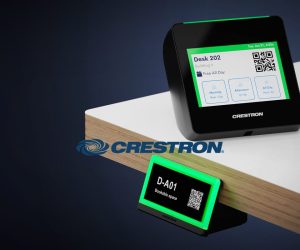




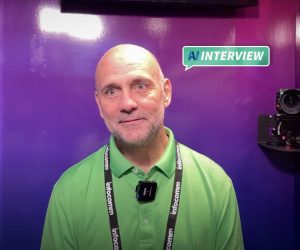


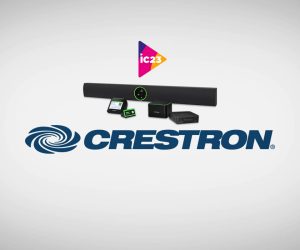

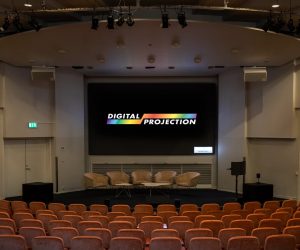
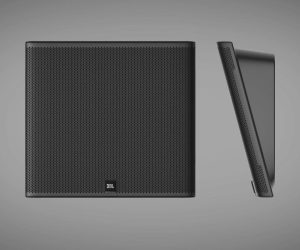


RESPONSES